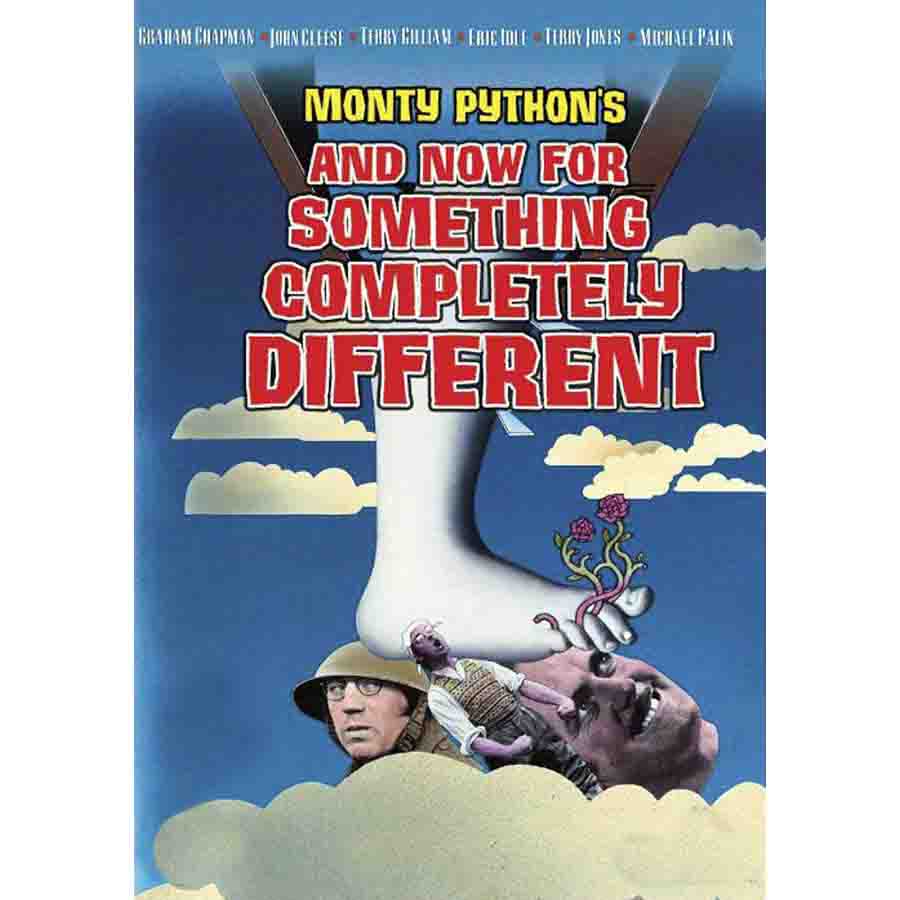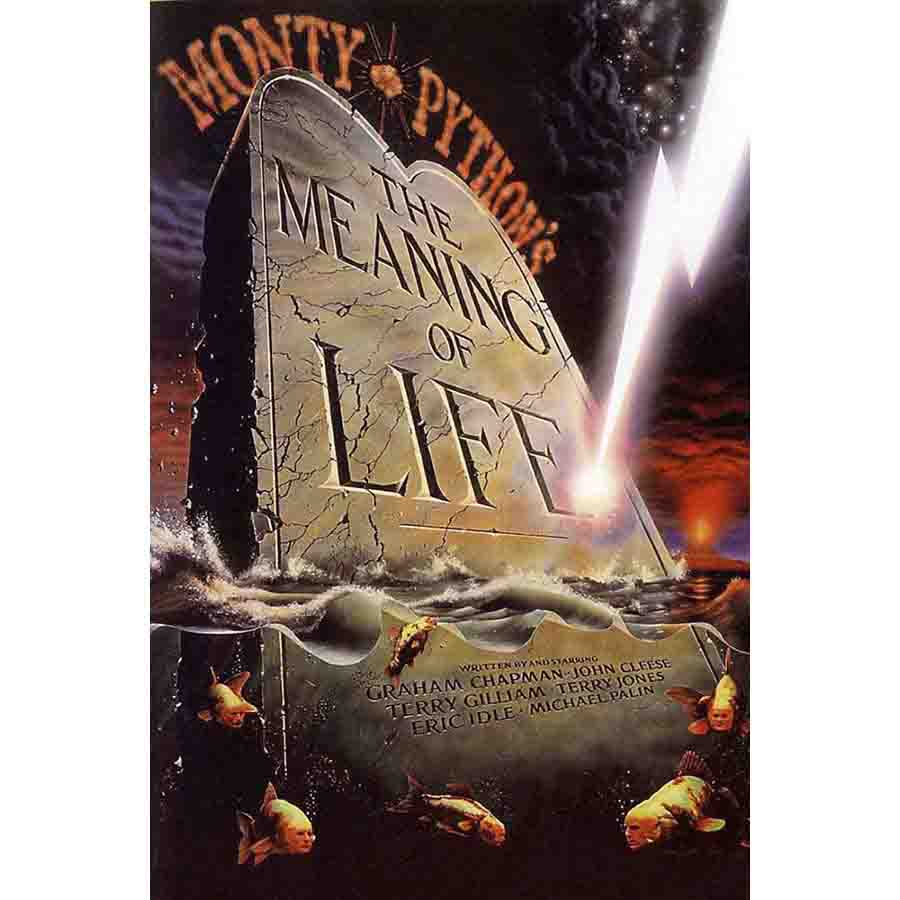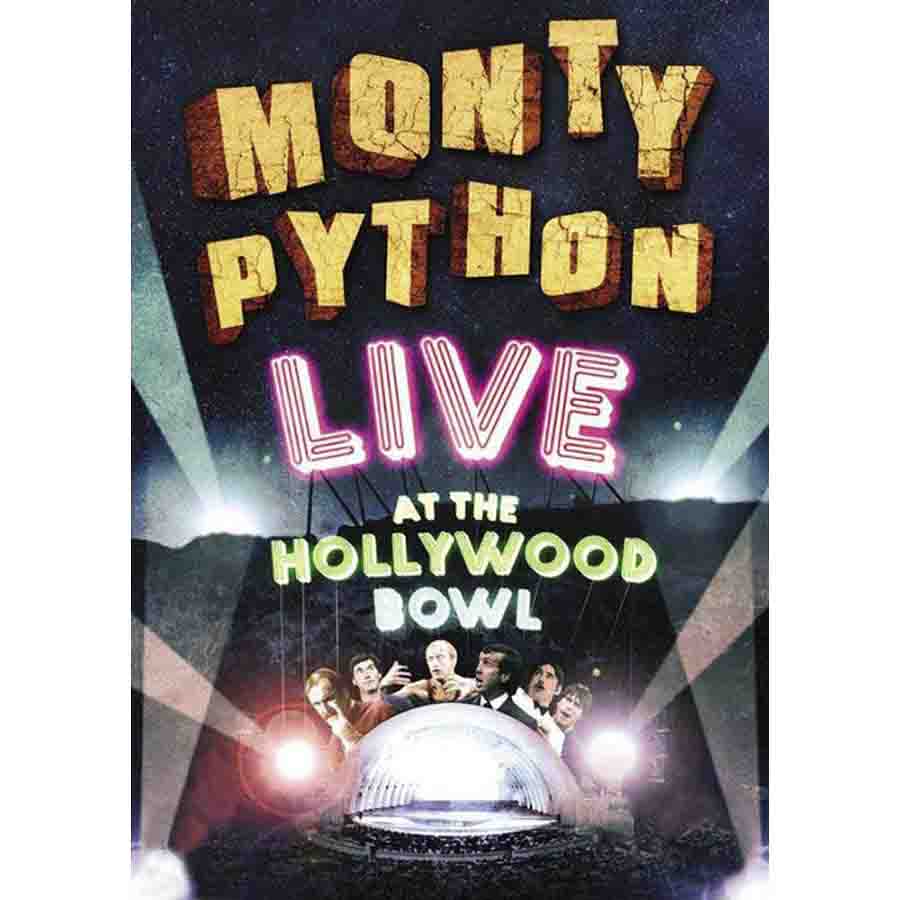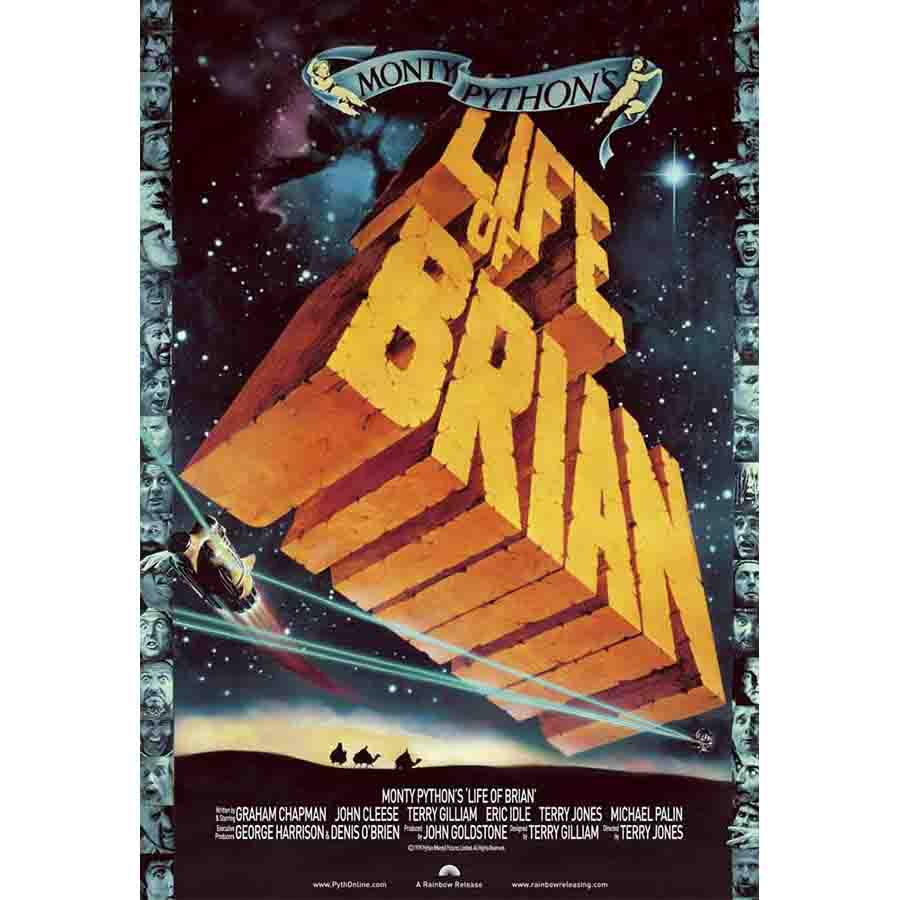- FILMS -
-
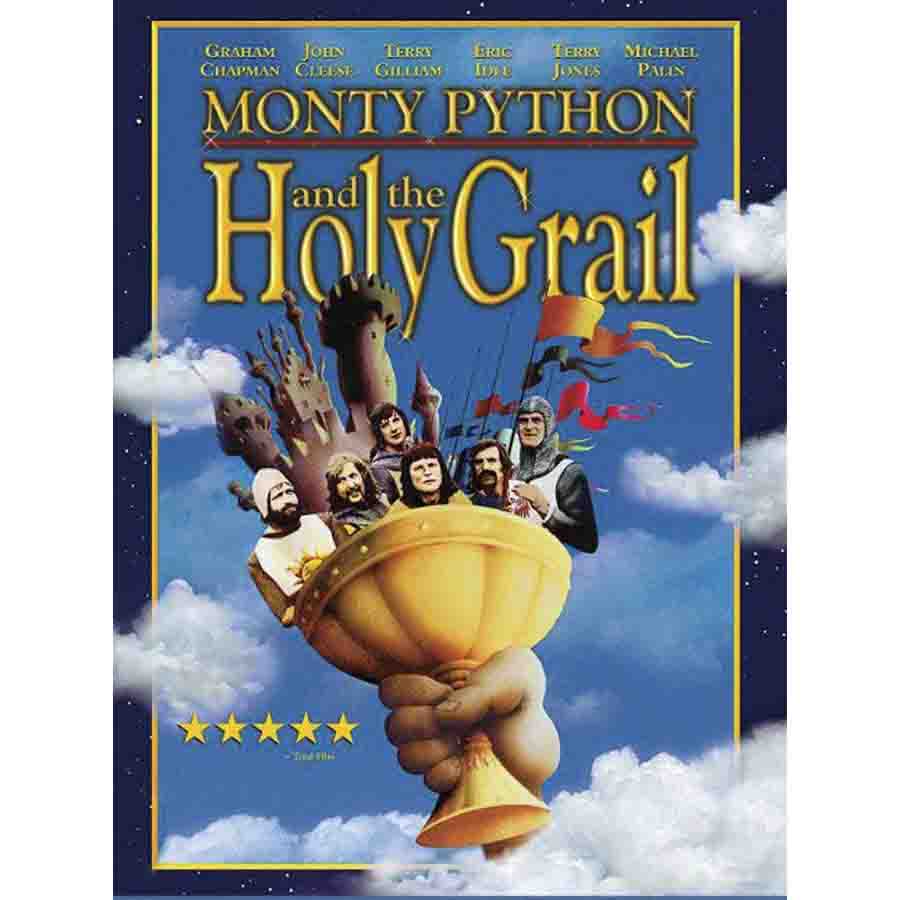
Monty Python and the Holy Grail (1975)
"Monty Python and the Holy Grail"
Directors: Terry Gilliam and Terry Jones
Producers: Mark Forstater and John Goldstone
World Premiere: Filmex, Los Angeles, 14 March 1975
Original Theatrical Release Date: 27 April 1975 (U.S.)
Running Time: 1:30
With their second feature film, the Pythons not only redefined the limits of narrative structure (basically by ignoring them), but also took innovative and unconventional styles of filming and applied them to comedy. The movie sends up costume picture clichés, mythic heroism, educational films, and even subtitles – nonsense rendered with a Swedish accent ("Mynd you, møøse bites kan be pretti nasti.")
Synopsis
The screenplay was a joyous romp through set pieces that sent up the serious, mythic characters at its center. As King Arthur (Graham Chapman) rounds up the gallant Knights of the Round Table to ride to Camelot, he must contend with subjects who are politically unfazed by his divinely-dispensed authority. He must also wield his sword against the Black Knight (John Cleese), a fearsome opponent whose gradual dismemberment fails to quell his desire to fight.
After turning away from Camelot ("It is a silly place," he says despairingly), Arthur sees a miraculous vision of God in the clouds above, who sets forth a task for his knights: find the Holy Grail. ("Good idea, O Lord." " 'COURSE it's a good idea!")
After a disastrous rout at a castle full of taunting French knights, Arthur's band separates in pursuit of the Grail. Sir Lancelot (Cleese) slays a good-sized portion of a wedding party, thinking he is rescuing a damsel in distress; Sir Robin (Eric Idle) escapes an argumentative three-headed knight; Sir Galahad (Michael Palin) is "rescued" from certain temptation at the hands of eight-score blondes between the ages of 16 and 19½. Arthur and Sir Bedevere (Terry Jones), meanwhile, are confronted by the diabolical leader of the Knights Who Say 'Ni' (Palin), who threatens their lives unless they acquire shrubbery.
After regrouping, the knights encounter Tim the Enchanter (Cleese), who tells them the last known location of the Grail may be revealed only once they have battled a terrifying killer rabbit (puppet). The film's climactic battle scene, shot against the beautifully austere backdrop of Castle Stalker, ends – for Arthur – on an unregal, embarrassing note.
The Making of
The group's first draft of "Arthur King" contained scenes set in Arthurian times and in the present day. "Originally the script went through the Middle Ages and the twentieth century, and ended with him finding the Holy Grail in Harrods," said Jones. His interest in Chaucer steered the project to staying put in the Middle Ages. [Among the modern-day material jettisoned were scenes involving toupees, psychiatrists and a boxing promoter, which were reconstituted for the fourth series of “Flying Circus”.]
The seriousness with which the characters behaved (such as pretending to ride horses as assistants banged coconut-halves together) made the jokes funnier, while the silliness of much of the story was made more believable than in a "Carry On" comedy by the realism of the settings and photography. The smoky landscapes, muddy locations and naturalistic lighting seem to capture accurately the Middle Ages. Costumes and makeup also reflect the concept of characters trying to eke out their existence in a harsh world.
" 'Bring out your dead,' " said Terry Gilliam, is "gorgeous. Shit has never looked so beautiful! And because of that, it's funnier, because it feels so much of a serious movie, a real movie, with real people groveling in the mud, and then 'I'm not quite dead! I'm feeling much better!' It's funnier that way."
As co-directors, Jones and Gilliam shared the responsibility of corralling the low-budgeted production across the location shoot in Scotland and at Epping Forest outside London. It was funded by a coalition of rock stars and record labels (Pink Floyd, Led Zeppelin, Jethro Tull, Island Records, Chrysalis Records and Charisma Records) and one of the film's producers, music impresario Michael White (who'd brought a Cambridge Footlights revue featuring Graham Chapman and John Cleese to London's West End in 1963).
Shooting for five weeks in April-May 1974, "Monty Python and the Holy Grail" was denied access to most of the castles that had been scouted, so Castle Doune stood in for three different locations. The tone for the shoot was cast on the first day of filming, when – having lugged equipment up a mountain at Glen Coe – the camera's gears broke on the very first take.
In addition to mandating a whirlwind shoot in difficult locations, the skimpy budget of £229,575 forced the filmmakers to make many creative shortcuts, such as eliminating horses – thus setting the stage for one of the film's most memorable running gags. "That must have been one of those very liberating decisions we had one day," said Palin.
After a disastrous screening for the investors of the first cut (with faux-period music and an extremely dense effects track), the film underwent several edits before it was successfully premiered at the Filmex Festival in Los Angeles. It was acquired by U.S. distributor Cinema 5. (Its head, Don Rugoff, was given to narcolepsy and fell asleep during the screening, but bought it anyway.)
With ads announcing the movie "Makes 'Ben Hur' look like an epic," "Holy Grail" opened in New York City in April 1975, with free coconuts given out to the first 1,000 ticket buyers (some of whom began queuing up at 5:30 a.m.). EMI debuted the film in London the following month.
Reception
Unlike the Pythons' first feature, "Monty Python and the Holy Grail" was a hit on both sides of the Atlantic. The film's anarchic spirit proved them masters not only of TV sketch comedy but of motion picture comedy as well.
It has also stood the test of time: On the Hollywood Reporter's 2014 list of Hollywood's 100 favorite films – culled from studio execs, Academy Award-winners and other entertainment bigwigs – "Holy Grail" ranked #68, the second-highest of any film produced outside of Hollywood.
A 2001 re-release included a bit of footage from Castle Anthrax (in which Carol Cleveland, as Dingo, breaks frame and asks the audience, "Do you think this scene should've been cut?"); the scene has actually been trimmed from the original U.S. theatrical version. The re-release also featured a re-mixed Dolby Stereo soundtrack.
And in the playful spirit of Python, some DVDs feature subtitles of text from Shakespeare's "Henry IV Part II" ("for people who don't like the film").
By David Morgan, 2014
AVAILABLE FOR PURCHASE HERE

